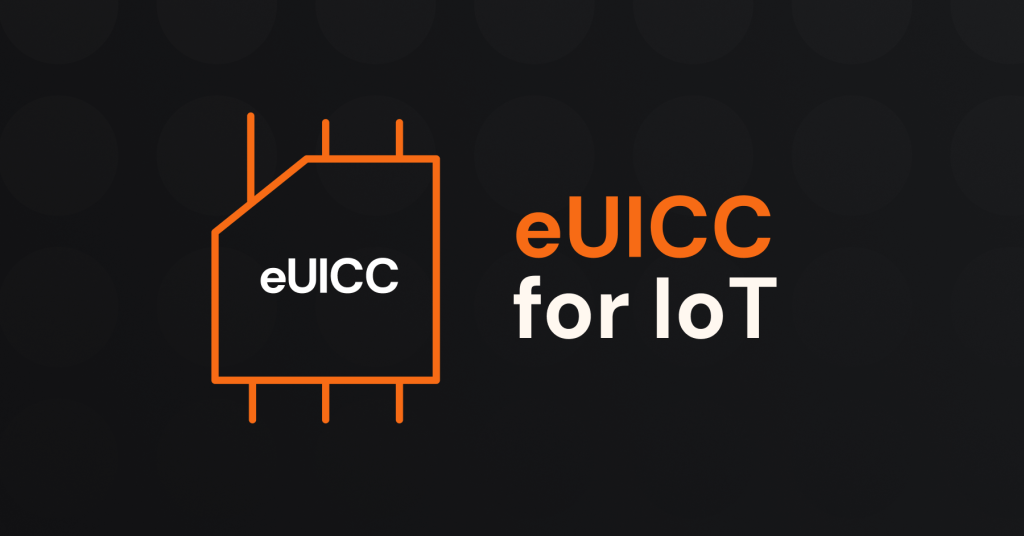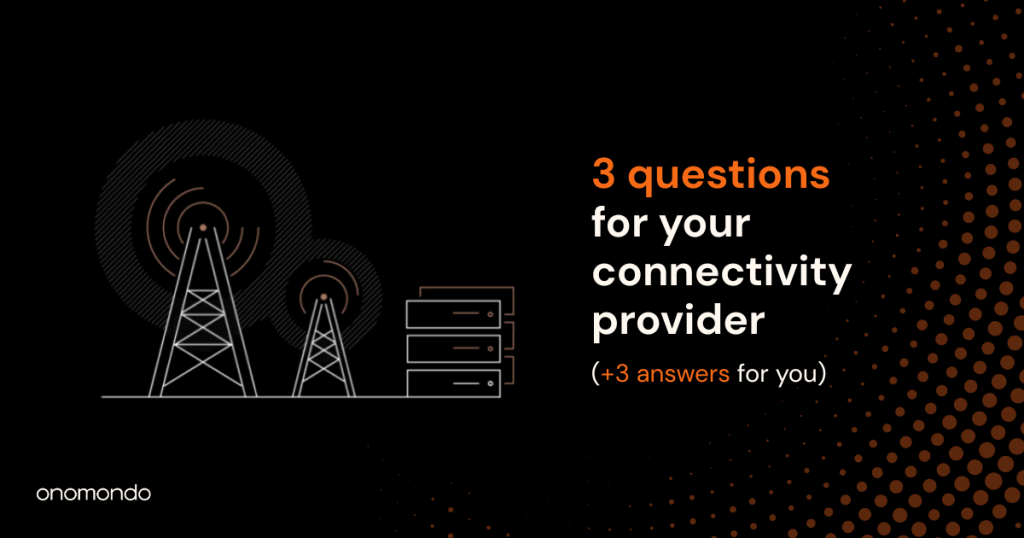“Mobile IoT” is a synonym for cellular IoT connectivity. But it also describes a huge segment of IoT devices. Micromobility vehicles, consumer wearables, asset trackers, and more: Many IoT devices don’t stick around in one place.
So when should you use mobile (i.e., cellular) networks to connect these mobile devices? Understanding the key benefits and limitations of cellular connectivity can help you make that decision. Before we get into the pros and cons of cellular connectivity for IoT devices that travel, however, here’s an overview of how cellular networks keep IoT deployments operating in the first place.
Table of Contents
A Brief Introduction to Cellular IoT Connectivity
Nearly everyone in the United States—97%, at least—uses a cellular phone of some kind. (For 85% of Americans, it’s a smartphone.) Everytime you send a text, make a phone call, or update social media, that phone sends a message to a cellular network.
The message is encoded into electromagnetic waves—radio waves, to be precise. Network towers pick up these signals. They also send radio signals back to the device. That’s how information moves wirelessly across the network.
Cellular IoT devices work the same way as your phone, but with a few key differences:
- Most IoT devices have different needs than smartphones. They prioritize low power demands, low data throughput, wide coverage, and consistent connectivity.
- To meet these unique demands, standardization body 3GPP defines special standards for cellular IoT traffic across mobile networks. These standards include LTE-M, NB-IoT, Cat 1, Cat 1bis, and 5G New Radio (NR) standards like RedCap and eRedCap.
- Each MNO has a limited coverage area. That means global IoT deployments (and moving IoT devices) can’t rely on a single Mobile Network Operator (MNO).
Luckily, there’s a solution to this last challenge. Cellular connectivity-as-a-service platforms create global cellular networks by managing partnerships with hundreds of local MNOs. They provide global connectivity hardware (global IoT SIM cards) or software (IoT SoftSIM) that connects your devices to these global networks. Finally, they manage a global cellular IoT connectivity stack from the base stations to simple user platforms, complete with analytics.
If cellular networks are right for your IoT deployment—especially if you operate in a global market—a strong connectivity partner is essential for ongoing success. But is cellular the right technology to connect your mobile devices? Keep reading to find out.
The Pros and Cons of Cellular Connectivity for mobile IoT devices
When an IoT device moves around a lot, you probably can’t keep it connected through Bluetooth, WiFi, or a private low power, wide area network (LPWAN). For many devices, that only leaves cellular networks and satellite connections, which can be quite costly.
That said, cellular connectivity offers a consistent set of advantages and limitations for every IoT device that’s not stationary.
Benefits of Cellular Connectivity for moving IoT devices
Cellular connectivity is usually a good choice for IoT deployments with mobile devices. These advantages explain why:
- Reliable global coverage. Nearly 90% of the world’s population is covered by a 4G network, making LTE Cat 1 and Cat 1bis, NB-IOT, or LTE-M—all IoT connectivity technologies—available just about everywhere.
- Regulated and standardized communications. Government agencies and industry groups control the parts of the electromagnetic spectrum that MNOs use to handle cellular IoT traffic. That makes radio waves themselves more reliable than the unregulated parts of the spectrum.
- High-speed connectivity. Cellular IoT standards are designed to be fast, limiting latency for quick access to data devices collect—and quick responses when devices run functionality on the cloud.
- Real-time tracking and data collection. The speed of cellular IoT communications enables nearly real-time data tracking. With instantaneous data processing, users can transform information into insights in time to make better decisions every time.
Limitations of Cellular Connectivity for Mobile IoT Devices
Of course, every communications technology has weak spots, too. Here are some of the downsides to cellular IoT connectivity:
- Inconsistent signal strength or network availability. Travel too far from any cell tower, and your device could encounter spotty connectivity. And because cellular data moves via radio waves, anything that blocks those waves—weather, terrain, or even a rush of other users—can disrupt service.
- Power demands. When IoT devices move around a lot, there’s always a balancing act between functionality and battery life. Cellular connections can sometimes draw a lot of power. Luckily, optimized tech stacks, low power modes, and the right IoT standards can limit this problem.
- Potential security vulnerabilities. Cellular networks are subject to a few unique security risks, like SMS hijacking and denial-of-service attacks. You can limit the security risks of cellular IoT with device-level security like IMEI locks, encryption, and lots of over-the-air updates—but nothing is more secure than a private, local network that doesn’t connect to the internet at all.
- Cost and complexity. We’ve talked about how each MNO only covers one part of the globe. Without a connectivity partner, IoT operators would have to manage contracts with MNOs in every market—and pay full rates that can quickly become cost prohibitive.
With the right connectivity partner, however, cost and complexity plummet. Such a partner allows you to manage connectivity for all your mobile devices within a single platform, and with consistent, transparent pricing. That’s ideal for lots of IoT use cases, some of which we’ll discuss next.






